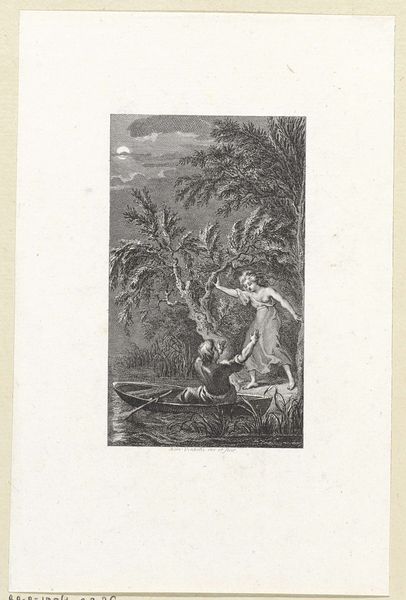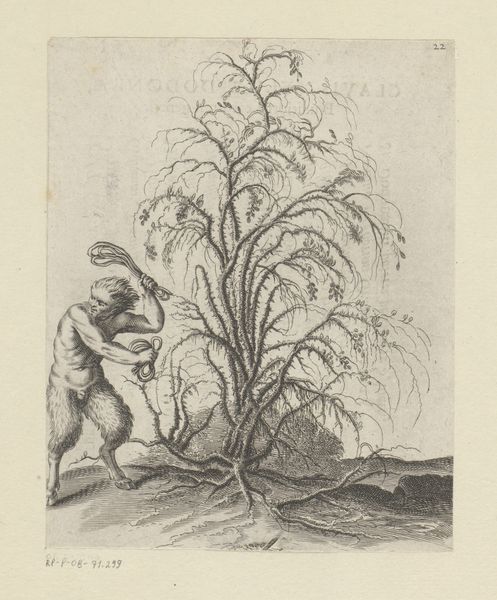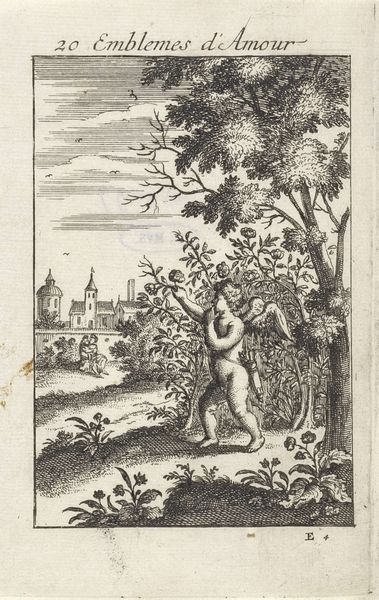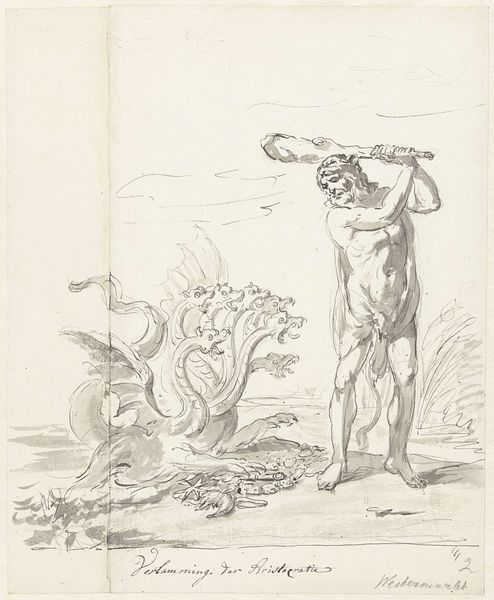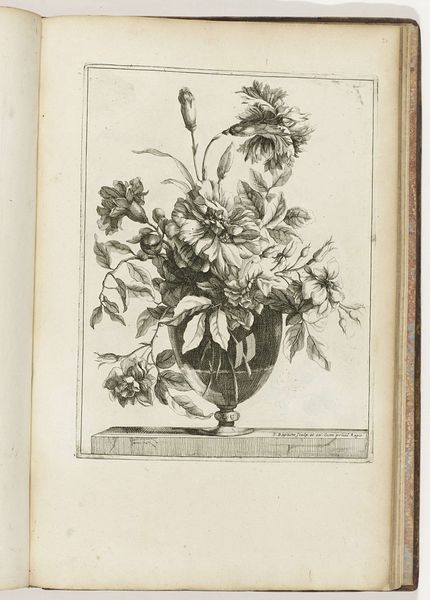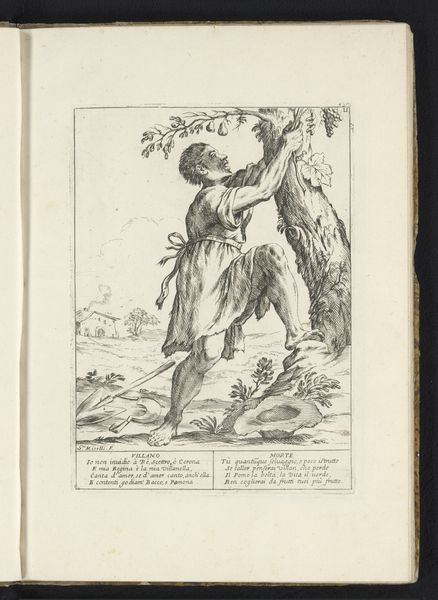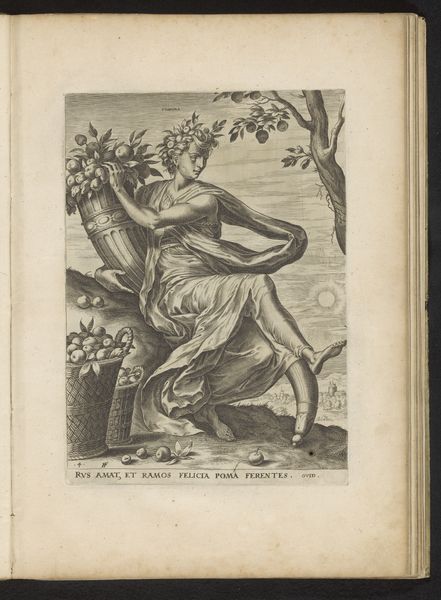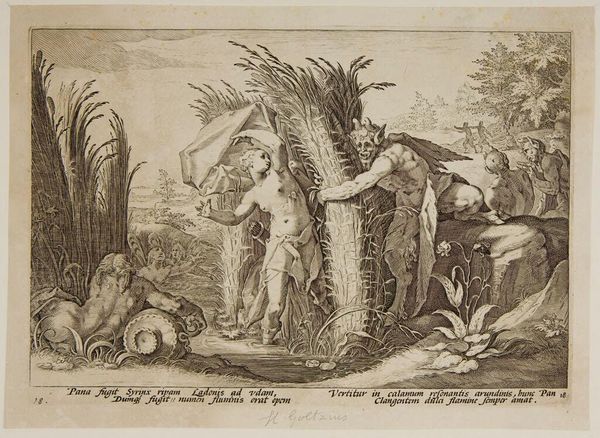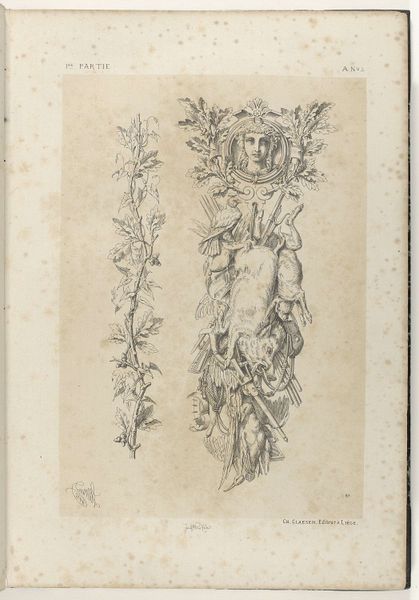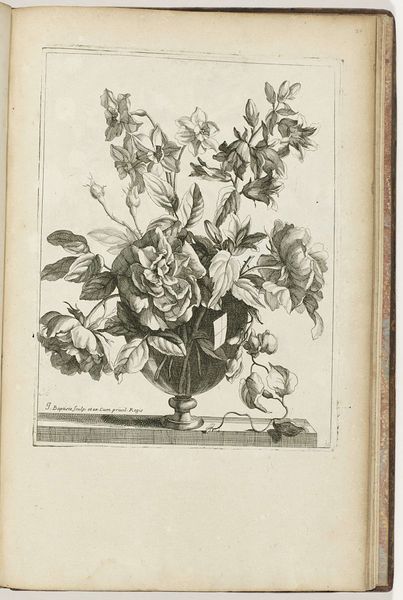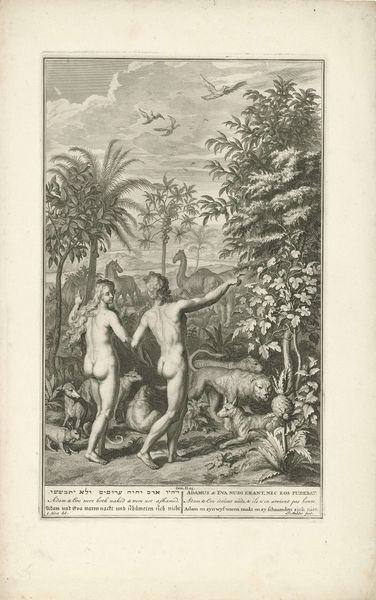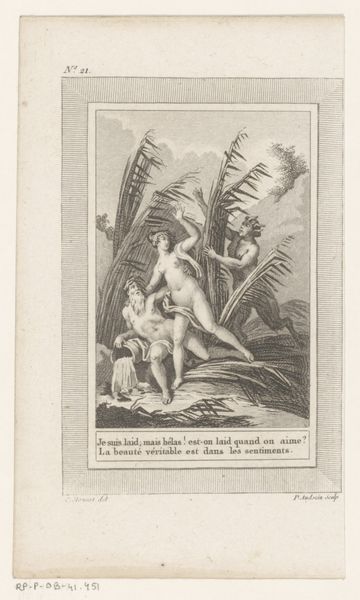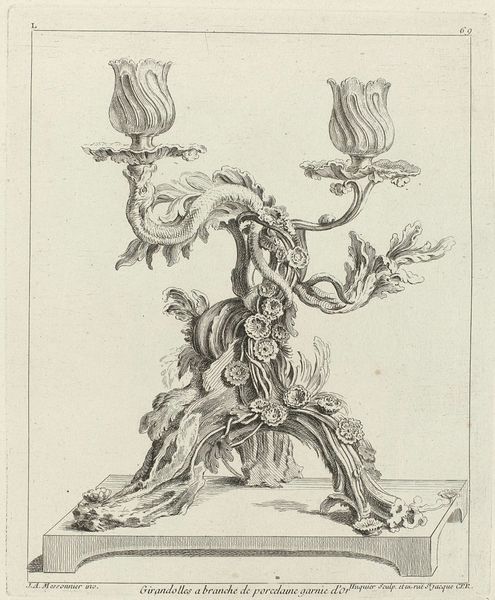
print, paper, engraving
portrait
pen sketch
figuration
paper
line
engraving
Dimensions: height 210 mm, width 182 mm
Copyright: Rijks Museum: Open Domain
Bernard Picart created this print, "Tobacco Plant and Native American," using etching, a process where lines are incised into a metal plate with acid, around the 18th century. The crisp lines and fine details were achieved by applying a waxy, protective coating to the plate, then drawing through it with a sharp needle. The plate was then immersed in acid, which bit into the exposed metal. The longer the plate remained in the acid, the deeper the lines became, allowing for a range of tones in the final print. Picart’s print is not simply a portrait of an individual, but an ethnographic illustration of the commercial exchange between Europe and the Americas, with tobacco as a key commodity. The work reflects the labor and cultivation necessary for the production and consumption of tobacco, and how this was tied to colonial politics and economics of the period. Looking at this print, we can think about how the processes and materials used can reveal the complex social and cultural contexts in which an artwork is made, blurring the lines between fine art and craft.
Comments
No comments
Be the first to comment and join the conversation on the ultimate creative platform.
